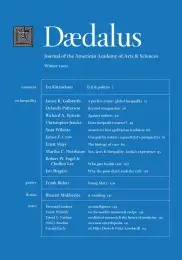Who gets health care?
Around the world, as in the United States, concern is growing about who gets health care.1 Individuals from different socioeconomic backgrounds face distressingly different prospects of living a healthy life. As numerous studies con- ½rm, the disparities in various measures of health between the privileged and the deprived remain wide, even in rich countries, despite the long-term tendency toward a healthier society.
Some investigators believe that the disparities are actually increasing. They suggest that the shift in the healthcare system in advanced industrial countries from the principle of universal access to a more market-oriented system may be one cause of the growing disparities they observe; rising income inequality is another potential culprit.
Policymakers worldwide meanwhile speak of more efficiently delivering “essential” health care, but nobody is certain what this means in practice. What counts as “essential” in health care? What is the optimal mix of private and government components of healthcare services?
It is these questions that we wish to explore in more detail. After reviewing the economic and epidemiological literature on disparities in health and healthcare systems, we will tackle directly the question of how to define “essential” health care–and then explore the policy implications of our analysis.
In the United States, substantial socioeconomic differences in illness and death rates have been documented by many researchers. These disparities not only vary widely by level of education but, as reported in 1993 in a paper published in The New England Journal of Medicine, the disparities increased between 1960 and 1986 for both men and women.2
Growing inequalities in well-being and access to health care have been reported for other nations, too. In Britain, recent studies by Russel Ecob and George Davey Smith, and also studies by Vani K. Borooah, have provided extensive evidence of socioeconomic disparities in the prevalence of illness, the probability of long-term limiting illness, perinatal deaths, low birth weight, and stillbirth risk. In Denmark, Finn Tüchsen and Lars A. Endahl found that illness and death due to cardiovascular disease was promoted by inequalities in income. Moreover, this disparity rapidly increased between the early 1980s and 1990s. In Rome, according to another recent study published in the Journal of Epidemiology and Community Health, socioeconomic differences in death rates rose during the early 1990s. In China, as Yuanli Liu, William C. Hsiao, and Karen Eggleston have shown, the gap in the levels of health between urban and rural residents also widened in the same period, despite rapid economic growth. Disparities have also increased in the treatment of less serious medical conditions. Thus, while overall oral health improved in Norway, the disparities in the treatment of cavities by socioeconomic group increased from 1983 to 1994. . . .
Access the full issue here.
